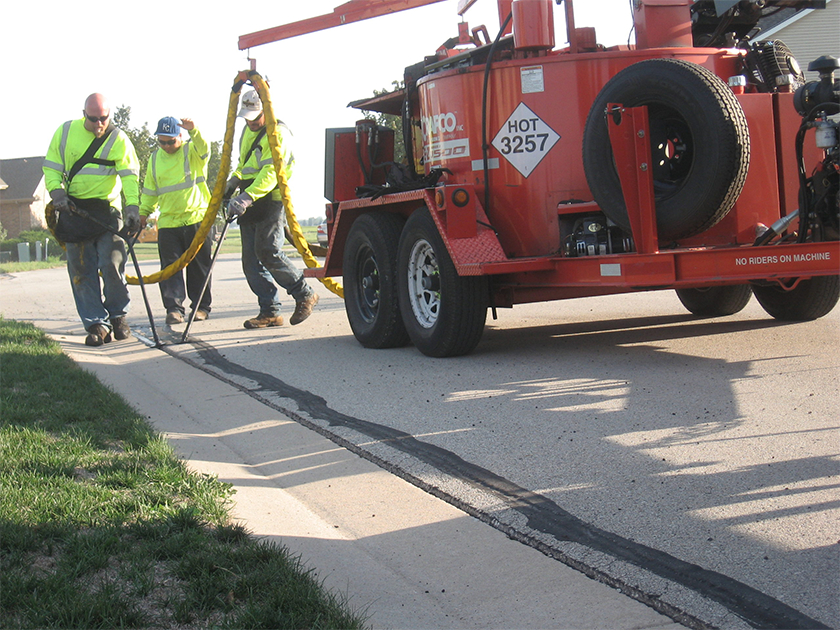 It can sometimes be discouraging to see the condition of an asphalt pavement after a long, cold winter. Temperature fluctuations, ground heave, and water penetration may leave your road or parking lot with numerous cracks. As you view your pavement, you may be wondering whether you should wait until summer to have your contractor make your asphalt repairs. Actually, spring is a better season for asphalt crack sealing.
It can sometimes be discouraging to see the condition of an asphalt pavement after a long, cold winter. Temperature fluctuations, ground heave, and water penetration may leave your road or parking lot with numerous cracks. As you view your pavement, you may be wondering whether you should wait until summer to have your contractor make your asphalt repairs. Actually, spring is a better season for asphalt crack sealing.
Why Spring Is the Perfect Time for Asphalt Crack Sealing
Why Would an Austin Paving Company Recommend Asphalt Cracks Sealing in the Spring?
As you may know, asphalt pavements are quite flexible, and they expand and contract when temperatures change with the seasons. When the pavement moves, any existing cracks will also move. The best time to apply an asphalt crack filler or sealer is when the crack is about halfway between its widest and narrowest points. This usually occurs during the spring and autumn months. However, your asphalt paving company will likely prefer to make crack repairs in the spring. The weather is typically better for making asphalt repairs in the spring, and the repairs will benefit from exposure to summer temperatures before they encounter their first extended cold snap.
What Are the Techniques That an Asphalt Paving Company Might Employ to Repair Cracks?
There are two techniques for repairing cracks in asphalt pavements. The best method is to seal the cracks with a flexible material that will move when the pavement expands and contracts in response to seasonal temperature fluctuations. However, there are a few types of cracks that require crack filling. Asphalt crack filler is rigid and incapable of expanding or contracting. Thus, when the pavement moves, it can break its bond with the filler.
What Are the Steps for Repairing Asphalt Cracks?
Whether the contractor chooses to seal or fill a crack, there are four basic steps that your asphalt maintenance contractor will take.
1. He will use a router to create fresh, uniform sides within the crack. He may also use a router to create a reservoir to hold additional crack sealant to ensure the quantity is sufficient for expansion and contraction.
2. He will clean and dry the crack. To be successful, the crack cannot contain any dirt, loose aggregate, vegetation, or debris. In addition, there cannot be any moisture within the crack.
3. He will place the material. For crack filling, the contractor will typically confine the material to the crack. For sealing, the material will cover the top of the crack and extend onto the pavement; it is also possible for material to be inserted into the crack.
4. Your contractor may or may not blot the fresh material to prevent vehicles from tracking the uncured material. Blotting involves using sand, cement powder, lime, talcum powder, or other materials to cover the newly repaired crack.
Alpha Paving is a respected, full-service Austin paving company serving most towns in Central Texas. Our services include asphalt crack repairs, thermoplastic line striping, asphalt striping, pavement marking, concrete repairs, asphalt paving and patching, concrete installation, parking lot signs, street maintenance, asphalt milling, road construction, asphalt overlays, sealcoating, parking lot signs and car stops, and speed bump installations. Our clients include airports, apartment complexes and condominiums, health care facilities, religious institutions, hotels, property management companies, educational facilities, subdivisions and HOAs, retailers, and municipalities and counties. We have an unmatched reputation for quality, service, integrity, and professionalism. You can request a free quote by submitting the online form. If you would prefer to call us, you can reach our office in Round Rock at 512-677-9001.




